
For Vail executives at Park City, Utah, December 27, 2024 started out as any other holiday would. Employees filtered in and were getting ready for the day, but at Ski Patrol Headquarters in both the Park City and Canyons base areas, the sense of normalcy would not last. Shortly after arriving, unionized patrollers read a brief statement in the locker rooms expressing support of local ski patrol managers and frustration with Vail executives, then the entire ski patrol staff hung up their jackets and walked out, starting the largest ski patrol strike in history.
For the next two weeks, all eyes in the skiing community were on Park City as the resort struggled to operate in the busy holiday season with limited terrain available. Though contract negotiations started more than nine months previously, ski patrollers remained on strike for 13 days before securing a ratified contract on January 9 and returning to work the following day.
The Park City Professional Ski Patrol Association, or PCPSPA, is a local chapter of the Communications Workers of America, and has represented Park City ski patrollers since 2016. The Canyons Ski Patrol has been unionized since 2000. Vail dissolved their union after purchasing The Canyons and integrating it with Park City, and both ski patrols unionized under one union shortly thereafter.
Ski patrolling takes years to master. Expert skiing ability and medical training may be prerequisites, but learning how to safely transport patients in rescue toboggans in any terrain, learning the mountain and how to safely open and maintain it, and gaining the experience to be able to respond effectively in inhospitable mountain environments takes several years to become proficient at. Beyond the basics, there’s avalanche mitigation, including the use of explosives, riding snowmobiles, search and rescue training, and much more that go into providing an effective ski patrol in complex terrain like at Park City. All of this means that too much turnover in staffing eventually erodes the knowledge base of a ski patrol and eventually leads to a lower quality response to emergencies. Many ski patrol unions have cited retention as a big motivator for deciding to organize.
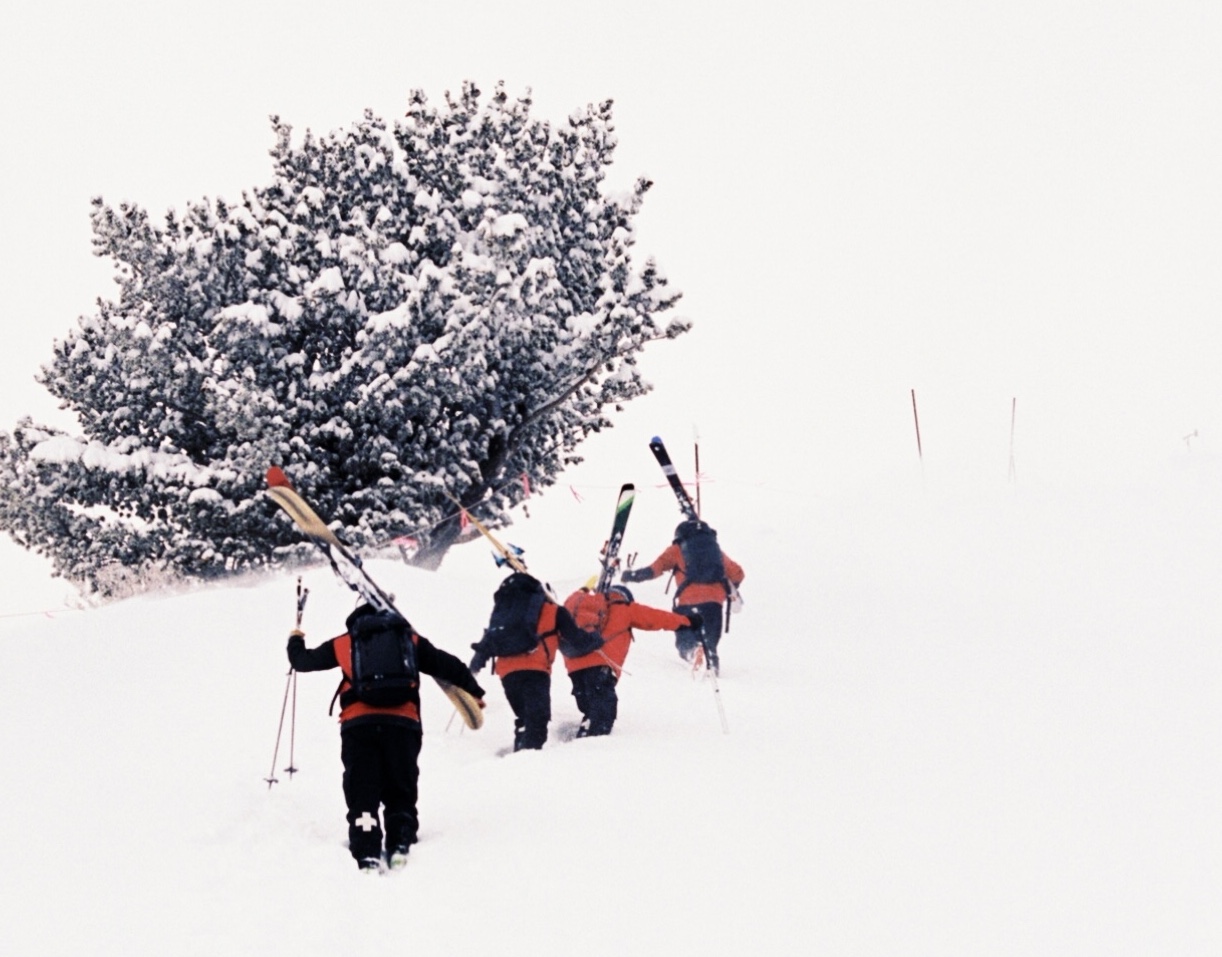
Park City’s previous contract, which took 18 months to negotiate, significantly raised starting wages for patrollers and provided funding for more training opportunities, but did little for experienced patrollers. Many patrollers at Park City and beyond find that they hit a wage plateau sometime in their first five years, and though they continue to master new skills and add new responsibilities, their compensation stagnates.
PCPSPA began negotiating with Vail Resorts over their current contract in April 2024. “Our goal last April was to get a contract long, long before the season started,” Kate Lips, Union President, said. Cole Valentino, a member of the bargaining team, described how negotiations started with “low hanging fruit,” or items that were easy to agree upon, with the goal of building momentum through the bargaining process. “You would think the expired contract would be a natural jumping off point” Lips said, but PCPSPA reported that Vail’s initial wages and benefits proposal was “not up to par with the current contract.”
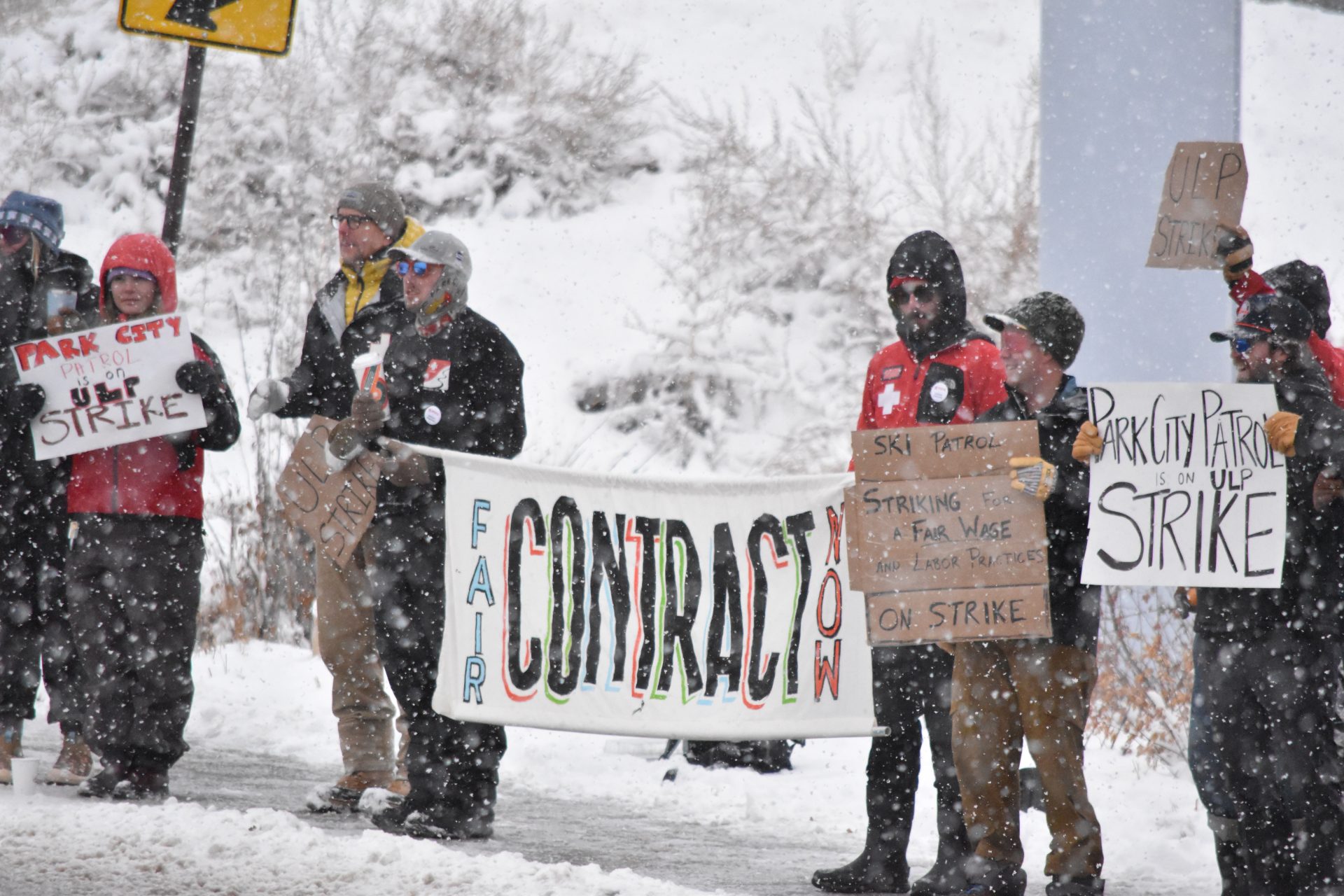
“We were hoping to have bargaining resolved by the time the season started, so in that interest, the union proposed wages and benefits back in September, and we didn’t receive a counter for fifty five days until the middle of November,” Valentino said. Bargaining over other contract items was still happening during this time, but wages and benefits were expected to be the toughest items to negotiate over. PCPSPA negotiators came to the table with economic data and comparisons to other resorts, but were often met with no counter proposals. “The whole goal is to have our proposals be deeply reasonable, rooted in inflation data and markets from neighboring ski resorts,” Lips said. Lindsay Hogan, Senior Director of Communications for Vail Resorts, said “Our company has a long history of reaching agreements with our unionized employee groups. We negotiate the various bargaining items in a thoughtful and deliberate way.”
Media coverage of the strike often cited the well-publicized PCPSPA proposal of raising the starting ski patroller wage from $21 per hour to $23 per hour. Vail Resorts pushed back against this reporting, saying that the average wage increase across new and experienced patrollers was closer to $7 per hour. The entire wages and benefits package, including both raises for starting patrollers and raises for experienced patrollers, was being negotiated during the strike. Hogan said “The Park City patrol union was demanding significant wage and benefit increases that went far beyond $2/hour and that were structured differently than our company’s compensation and benefits framework.”
Lips said that the last union proposal for wages and benefits before the strike started was given to Vail’s bargaining team on December 12, and for two weeks, during which bargaining sessions were taking place, the company did not offer a counter proposal. On December 14, the union held a vote on strike authorization, which passed with 100% support. Around mid-November, the bargaining team for PCPSPA proposed the idea of mediation to the Vail Resorts bargaining team, who agreed roughly one month later, close to the time of the strike authorization.
The first bargaining session with the federal mediator was on December 26, 2024. Though wages and benefits was causing the largest impasse in negotiations, the Vail Resorts bargaining team wanted to reopen a different issue regarding management, which had been “set aside for quite awhile,” according to Valentino. “Just the way that day one went, by opening something that had been put aside for quite a while, and didn’t feel a lot of impetus into moving into wages and benefits, we felt like we were put into a tough spot for that second day of mediation.” PCPSPA did not feel that Vail Resorts was negotiating in good faith. “It feels like they were not listening to any language besides decisive collective action, Lips said. “It kind of feels like we spent ten months trying to avoid getting to this point.” The next morning, on December 27, 2024, union members hung up their patrol jackets and walked out, initiating the largest labor strike in the history of the ski industry.

Union leadership reported that they were prepared for another previously scheduled mediation session on December 27, the first day of the strike. Hogan described Vail’s perspective on the initiation of the strike, saying “We were scheduled and prepared to mediate with the union again on Dec. 27 when we were notified the union was going on strike. We were surprised and disappointed the union decided to walk away and take the drastic action of a strike. At that time, we had reached tentative agreements on 24 of the 27 contract articles that the union had reopened over the last 9 months. We had made significant progress and had continued to meet on a regular basis, engaging in good faith.” With the ski patrol on strike, Lips told SnowBrains that the company was more receptive to bargaining, and the union and Vail Resorts began trading almost one counter offer per day.
While the situation at the negotiating table may have been improving, the situation on the mountain was deteriorating. Faced with enormous holiday crowds and extremely limited ski patrol staff, Park City managers were forced to keep much of the mountain closed. At times, less than 20% of terrain was open for skiing. One Park City Mountain Resort employee who was working during the strike described the situation as “Chaotic.” The employee, who wished to remain anonymous because of potential backlash from Vail Resorts, said that the lack of open terrain with the holiday crowd created a very unpleasant experience for the customer. “There’s no control on the mountain.”
Vail Resorts tried to alleviate some of the effects of the work stoppage by bringing in patrollers or patrol managers from other Vail-owned resorts. Larger staffing numbers certainly helped with response time and presence on the mountain, but fresh snow brought fresh challenges, as the fill-in patrollers largely lacked the experience to open much of Park City’s more challenging and avalanche-prone terrain. Though many of these patrollers may have had the skills necessary to respond to emergencies, conduct rescues, and perform avalanche control work, a lack of Park City-specific knowledge prevented these patrollers from operating effectively. It takes years to build up the experience with Park City’s terrain that is necessary to be an effective patroller. “The company has said with their words that they agree and understand that retention is really important, but they haven’t said that with their numbers,” Lips said.
Vail Resorts maintains that Park City Mountain was staffed with experienced patrollers throughout the strike. Hogan shared the following statement with SnowBrains about staffing during the strike. “Like any responsible company, we always have plans to maintain safety, operational continuity, and business stability across a wide range of situations so that we can continue to serve our guests, employees and communities in the event of a disruption. Experienced ski patrol leaders from Park City Mountain continued to work throughout the strike, and we brought in highly experienced ski patrollers from other mountain resorts to support. These individuals are lifelong professionals dedicated to safety and the on-mountain guest experience. They were trained on their assigned terrain area by the resort’s patrol leaders. We are grateful for all of our team members at Park City Mountain, as well as those who traveled to the resort, who ensured we stayed open and operating safely for our guests, fellow employees, and the community.”
Three days into the strike, on December 30, Deirdra Walsh, Chief Operating Officer of Park City, addressed the public in a video shared on social media. “It is obviously very disappointing to have members of our ski patrol on strike. We have plans in place to safely operate—but there have been operational impacts from the union’s action,” Walsh said. “We have not been able to open as much terrain as we would like to and I know that resulted in delays in operations and longer-than-usual lift lines.”
The next day, unionized patrollers from Breckenridge, Crested Butte, and Keystone, joined Park City patrollers in an open letter to Vail Resorts’ CEO, Kirsten Lynch. The letter pushed back against Vail Resorts’ decision to bring in staffing from other Vail-owned resorts. It appears many of these fill-ins were at the manager or supervisor level. The Vail Daily reported that Vail Mountain’s ski patrol director and health and safety manager were among the replacements and the Denver Post reported that management-level patrollers from Breckenridge also went to Park City. “By removing local leadership from their resorts without notice, you failed to provide these patrols proper leadership at the height of the busiest time of the year,” the letter said. “A lack of local leadership has a huge negative effect on morale, how our teams effectively manage risk for ourselves in the field, and keep a safe experience for the guests that visit our resorts.” Vail Resorts told SnowBrains via email “There were no impacts to other mountain resorts as a result of the support provided at Park City Mountain.”
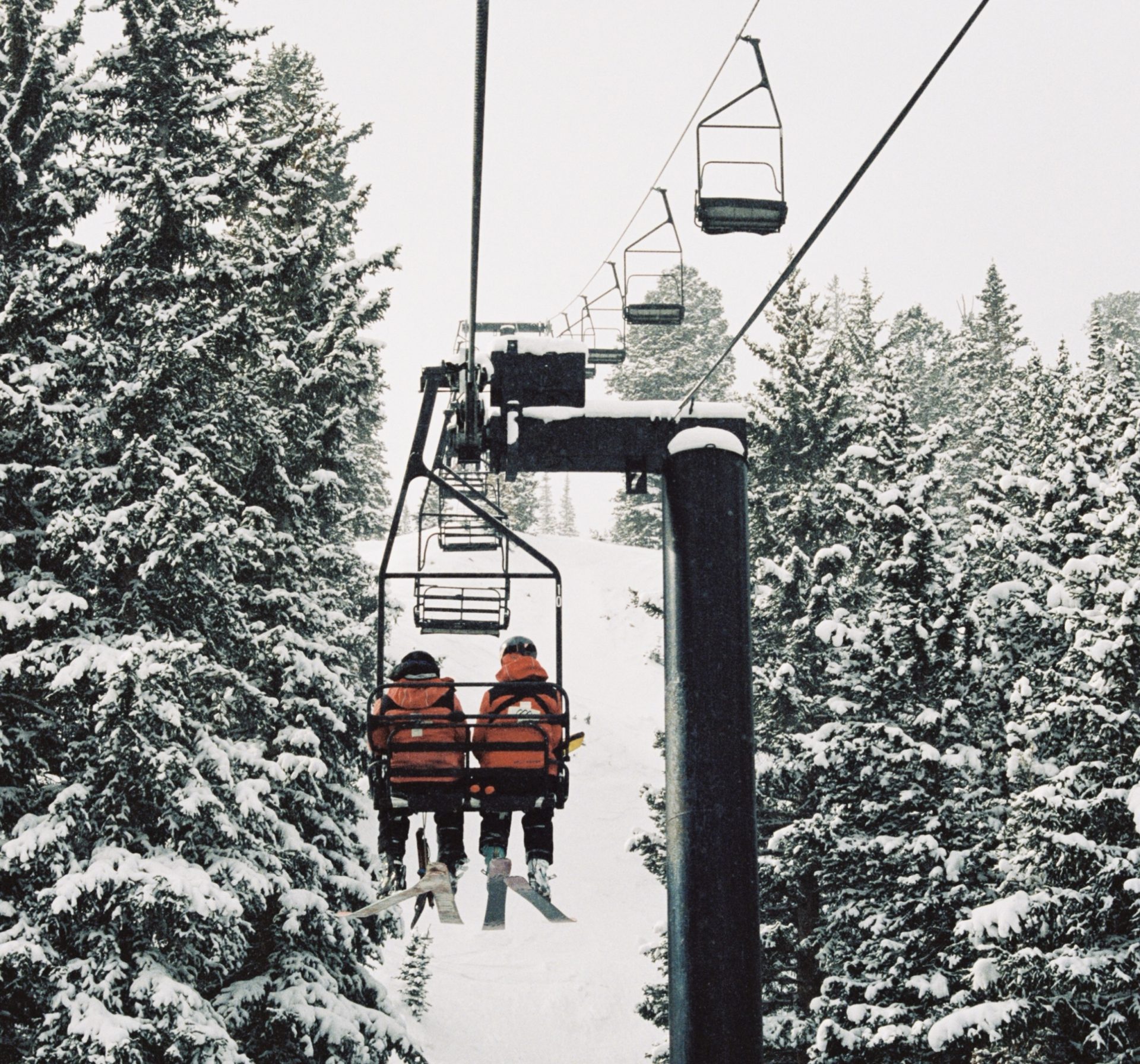
After the open letter was published, Vail Resorts’ stock price tumbled more than 5% in a single day. Vail Resorts has led the ski industry in acquisitions of ski areas and the creation of multi-resort passes, like the Epic Pass. These business moves have helped insulate Vail Resorts from season to season changes in operations, either due to low snowfall or other factors like work stoppages. In 2016, just 40% of Vail’s lift revenue came from season passes compared to day tickets. Fast forward to 2023 and that number was up to 61%. SnowBrains has previously reported that this increase in focus on season passes likely helped Vail Resorts weather the pandemic, and season passes also likely helped insulate Vail Resorts from the financial effects of the ski patrol strike. Vail’s drop in stock price cannot be attributed to loss in revenue during the strike. Instead, one likely explanation is a shift in public sentiment.
During the early days of the strike, union members established picket lines at both base areas. Union leadership established a shift schedule for union members to put time in on the picket line. Union patrollers worked at least two five hour shifts per week, to give space for working second jobs while the work stoppage was in effect. “The first day was really tough. It was a big decision for the whole team. I think what made it ok in the end was that we had so much solidarity. We had a 100% strike authorization vote and everybody kept their word,” said Corlan Williamson, a union patroller. From the start, patrollers on the picket line reported an overwhelmingly positive response from the community. Several local restaurants dropped off food for picketing patrollers throughout the strike. “The first day, the amount of food was overwhelming. So many cookies,” Lips said. Williamson added that patrollers received a tremendous amount of support on social media throughout the strike.
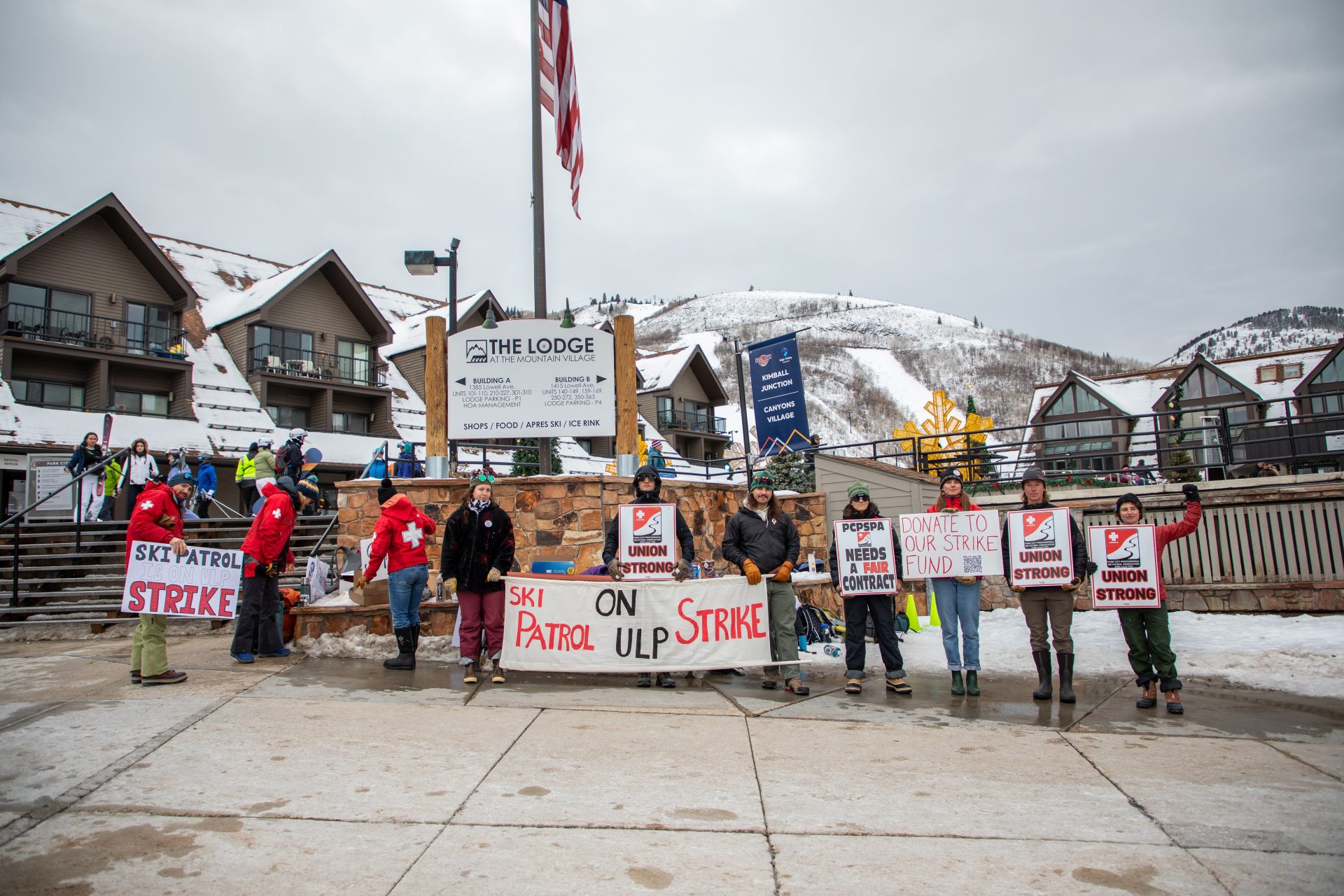
To help patrollers cover living expenses during the strike, PCPSPA set up a GoFundMe page to raise money from the public. The union was able to start disbursing funds to patrollers starting on January 1, to help cover living expenses. In total, the strike fund raised more than $306,000.
Despite renewed efforts at the negotiating table, the strike entered its second week, and public sentiment was moving against Vail Resorts. Chants of “pay your employees” were heard in lift lines at the resorts, and customers grew frustrated with continued limited terrain offerings and long lift lines. Park City’s Mayor, Nann Worel, issued a statement on January 7 calling on Vail Resorts to negotiate an end to the strike. “The Park City Council and I recognize that resort communities face significant livability challenges—and it is the workforce that all too often shoulders the weight of today’s economic pressures,” Mayor Worel said. “After yet another weekend of confusion and disruption due to the unresolved labor dispute at Park City Mountain, the City Council and I urgently call on Vail Resorts to take immediate action to conclude negotiations and end the uncertainty.”
Late in the evening on January 7, PCPSPA and Vail Resorts announced that they had reached a tentative agreement. A vote for ratification was scheduled for January 8 and the union board said they were 100% in support of the agreement. On January 8, the contract was ratified and the strike was brought to an end, with ski patrollers back at work on January 9, 2025. Bill Rock, President of Vail Resorts’ Mountain Division, said “Park City Mountain has reached an agreement with the Park City ski patrol union that is consistent with our company’s wage structure for all patrollers, non-unionized and unionized, while accounting for the unique terrain and avalanche complexity of Park City Mountain. We look forward to welcoming back the Park City Mountain patrollers in the coming days and moving forward together as one team.” The current contract is valid through April 2027.
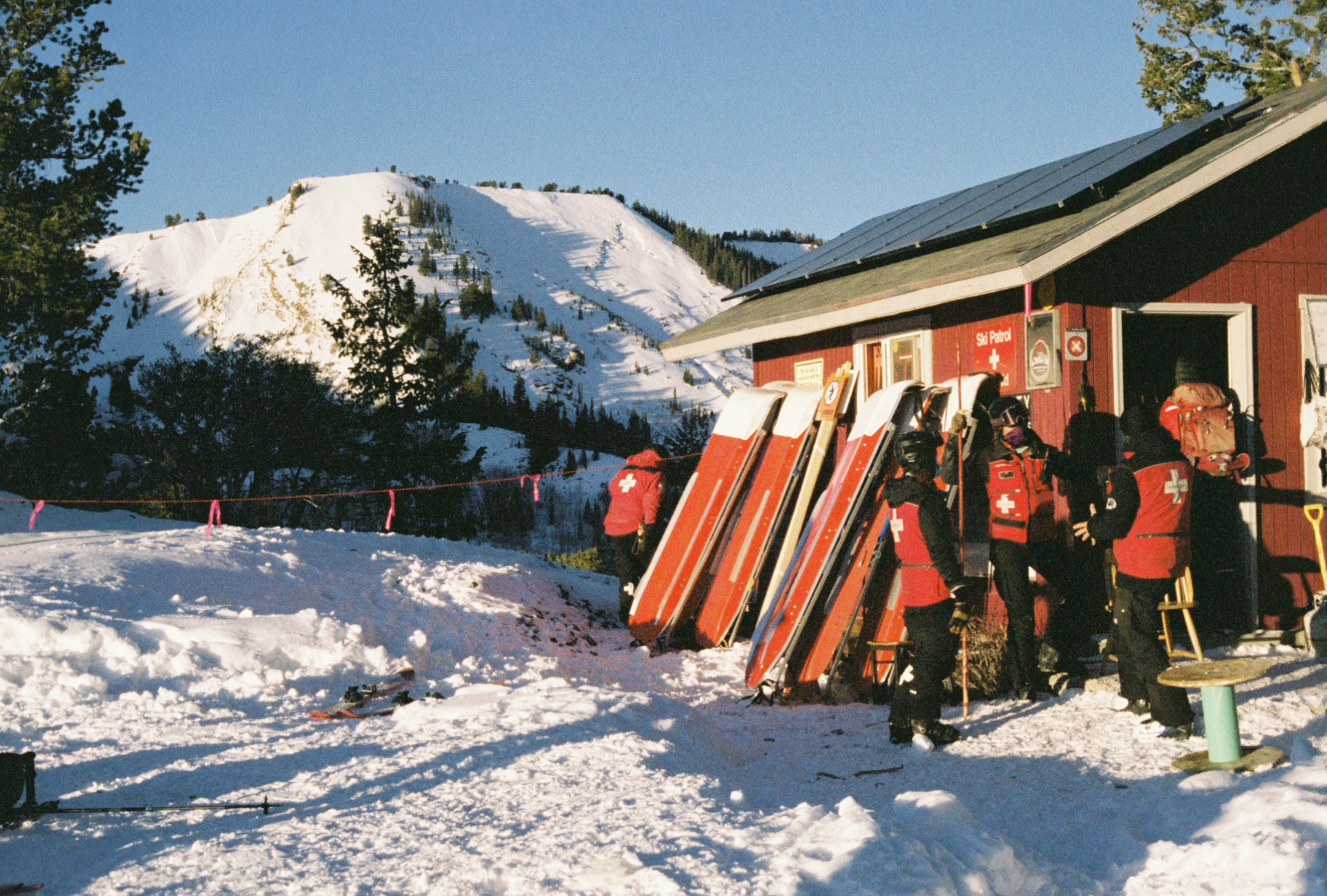
The end of the strike was not the end of the trouble for Vail Resorts. Shortly after the strike was over, a class-action lawsuit was filed against Vail alleging the resort did not notify customers of the impacts of the ski patrol strike. The lawsuit is being led by Christopher Bisaillon, an Illinois resident who claims he spent more than $15,000 for a week-long ski trip during the strike and skied less than ten runs. Later, Pomerantz LLP announced they were investigating Vail Resorts for potential securities fraud “or other unlawful business practices,” likely related to the January 2 stock price crash.
In total, this contract took Vail Resorts and PCPSPA almost ten months to negotiate. The previous contract took more than 18 months to negotiate and the union authorized a strike. PCPSPA’s first contract, ratified in 2016, took around a year to negotiate. That contract was the first contract to represent patrollers from both the Park City side and the Canyons side. Though patrollers from the Canyons had a long history of labor contracts with the previous Canyons management, negotiations started from scratch and prolonged the bargaining process. “When we transitioned from Canyons Ski Patrol to Park City Ski Patrol Association, we as that first negotiating team were really optimistic that we could take the CSP contract and build off of that, but what happened was we had to start from the ground floor,” said Julia McCarrier Edwards, a Canyons ski patroller who was on the first two PCPSPA bargaining teams. Following the first PCPSPA contract, negotiations in 2018 only took five months.
After hammering out an initial agreement with Vail Resorts for both patrollers on the Canyons side and the Park City side, the relative speed of the 2018 contract negotiations is remarkable compared to both the current and 2022 contracts. “In our first two contracts, Vail was working with an outside legal team,” McCarrier Edwards said. “Whether that created scheduling or budgetary differences, there just seemed to be more interest in finding a deal as opposed to playing this dragged out game.”
Whether or not Vail’s switch to an internal bargaining team for the last two contracts contributed to more drawn out negotiations, union leadership has suggested that there are much bigger reasons contributing to a challenging negotiation. “It’s evident that the money isn’t the issue, it’s more of an optics issue. At times it is awkward negotiating what should be dollars and cents when often we are negotiating the world view of it,” Valentino said. Lips added, “It feels as if this is about sending a message to everyone who is watching to not want to unionize and that Vail is too big to be pushed around. They would rather take a financial hit and a PR hit than pay this group of 200 people because they are worried about the implications it would have for the rest of their enterprise.” When Vail Resorts negotiated their first two contracts with PCPSPA, there were far fewer unionized patrols in the ski industry. Since then, Vail resorts has seen a rise in organized labor in their portfolio of resorts, including ski patrols at Breckenridge, Stevens Pass, Keystone and others, as well as lift mechanics at Park City and Crested Butte. Hogan said “When we make decisions about our team members’ pay, we consider all our team members across all our mountain resorts. Once the negotiations in Park City moved into the company’s compensation and benefits framework, we made great progress. We have great respect for our patrollers and all of our employees, and we are happy to have the full team back on the mountain.”
The Park City strike is an important precedent in the development of labor unions in the ski industry. During one of the busiest parts of the ski season, patrollers secured important pay raises and incentives to help reduce attrition of experienced patrollers, despite Vail Resorts keeping the resort open with the use of fill-in patrollers from other Vail properties. As the ski patrol unionization movement continues to develop, the Park City strike will remain an example of the power that collective action can have in enabling workers in the ski industry to build a more robust and achievable livelihood.
More from Zach Armstrong:
- Forest Service Budget Challenges Threaten Avalanche Center Operations Nationwide
- The Battle Over The Future Of Palisades Tahoe
- How the Fatal GS Bowl Avalanche at Palisades Tahoe, CA, Happened and Why it Could Happen Again
- Inside the Ski Industry’s Post-Pandemic Boom
- How Eldora, CO, Ski Patrollers Finally Got Their Union